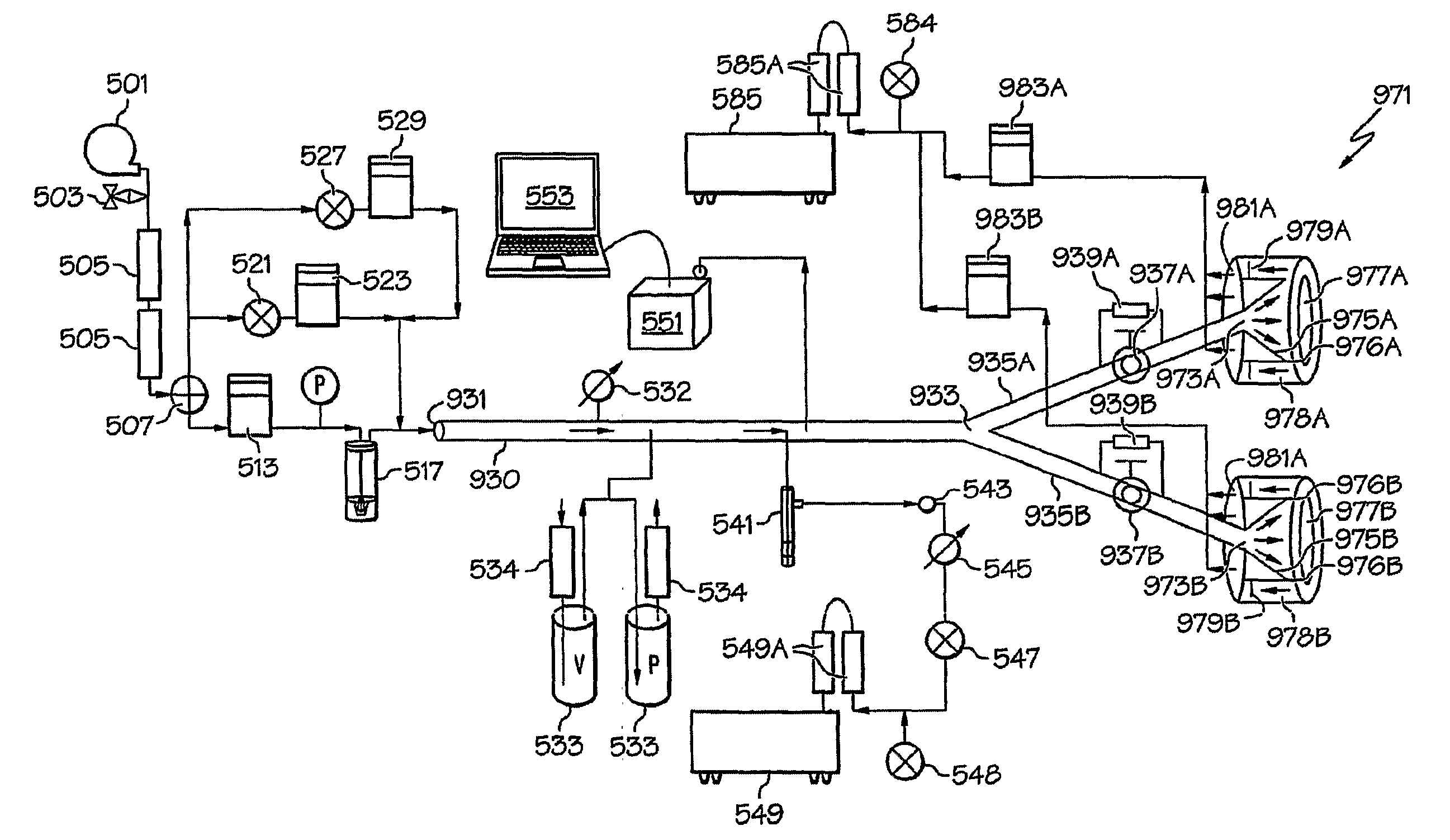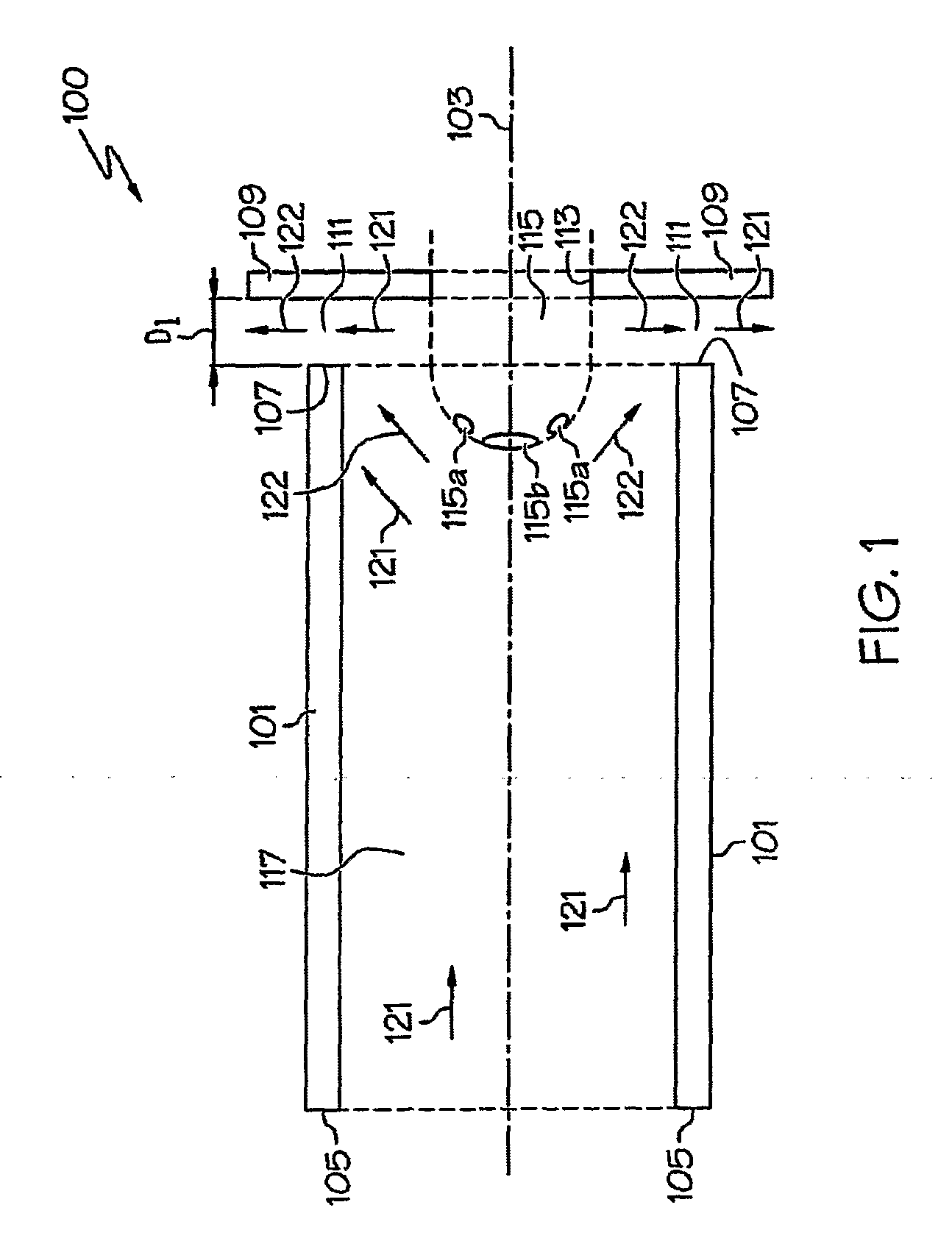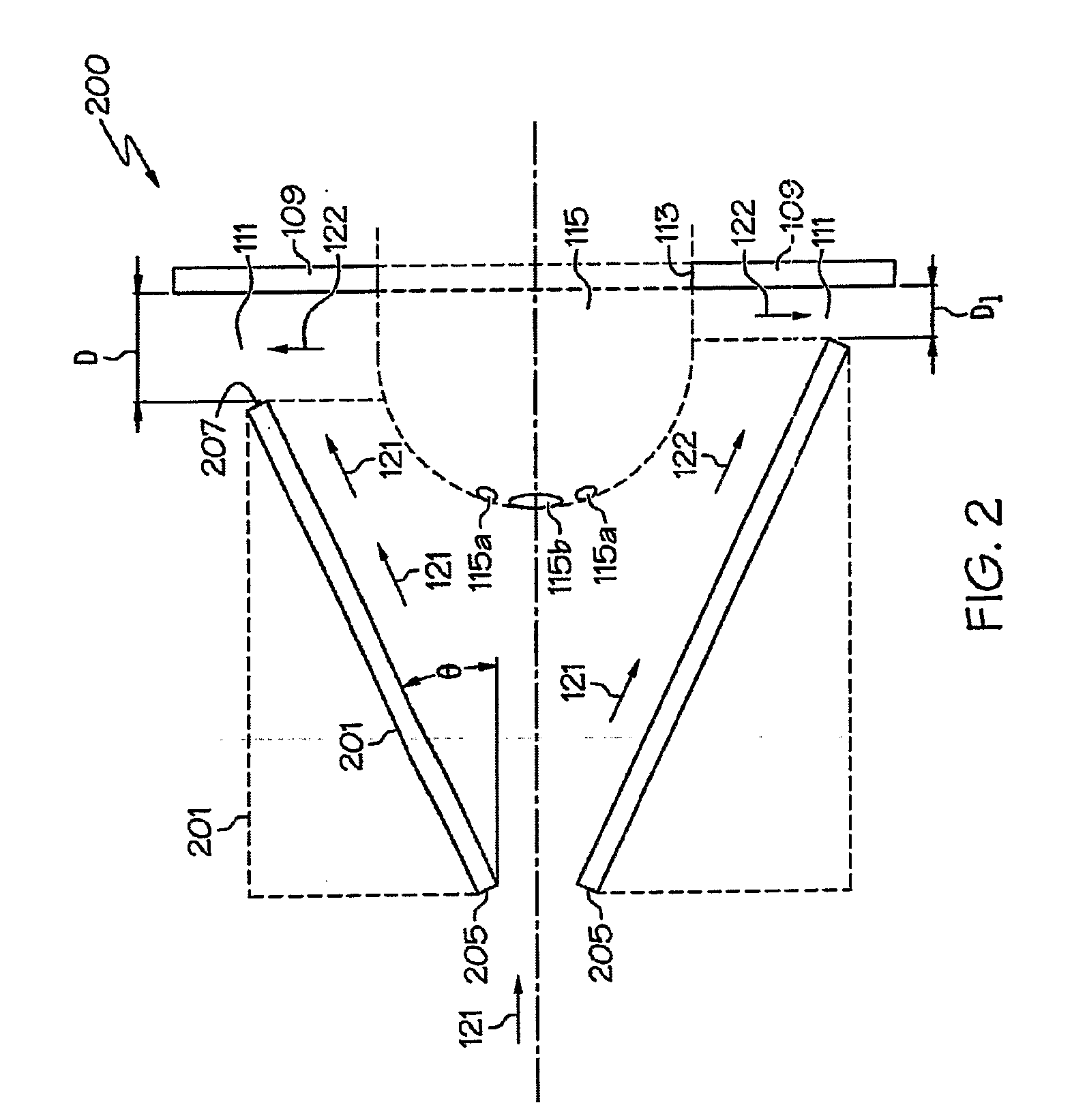Inhalant exposure system
a technology which is applied in the field of inhalant exposure system to achieve the effects of enhancing preventing the loss and not impede the flow of inhalant and exhalation
- Summary
- Abstract
- Description
- Claims
- Application Information
AI Technical Summary
Benefits of technology
Problems solved by technology
Method used
Image
Examples
example 1
[0043]A laboratory scale inhalant exposure system for providing an inhalant such as an aerosol to animals was built in accordance with the figures. The inhalant exposure system was constructed of Plexiglas™ (although any plastic or metal inert to the test materials will work) and consisted of a 2.54 cm inside diameter tube with a 5.08 cm outside diameter of approximately 56 cm long. The end of the tube was mated with a 10.2 cm long and 5.1 cm inside diameter solid stock of Plexiglas™ with a 10.2 cm outside diameter. The end of the tube was lathed at 30° to form a truncated cone radiating out from the 2.54 cm (1 inch) diameter inner tube, to the 10.2 cm (4 inch) diameter outer tube for the insertion of the animals nose through a rubber dam. A 15.25 cm (6 inch) outside diameter and 12.7 cm (5 inch) inside diameter tube was mounted concentrically with front and back plates around the 10.2 cm (4 inch) diameter tube for exhausting the aerosol from the system. The face plate, located arou...
example 2
Multiple Animal Inhalation Exposure System
[0058]The multiple inhalation exposure system (FIG. 9 ) was constructed of Plexiglas, and consisted of a 2.54 cm inside diameter tube with a 5.08 cm outside diameter of approximately 56 cm long. The end of the tube was mated with a Y tubing connector with an inside diameter of 1.9 cm. The Y tubing connector is utilized to divert the challenge aerosol to two separate exposure sites. Two 50 cm long sections of flexible Tygon™ tubing with a 1.9 cm inside diameter are connected to each port of the Y connector. The two sections of Tygon™ tubing were in turn connected to two ball valves (also known as isolation valves) that are each attached to an exposure unit. The ball valves would be utilized in actual exposure challenges to turn off the exposure challenge to one of the exposure units and animal model based on inhaled volume while continuing to deliver the exposure challenge to the other exposure unit. By tuning the ball valve off, the aerosol ...
example 3
[0065]Aerosol Challenge (Nebulizer) Suspension Enumeration: The challenge spore suspensions (B. anthracis) were prepared by diluting the stock suspension to a targeted concentration. The challenge spore suspension was enumerated by serial dilution of the challenge suspension by spreading 0.1 mL on each of five tryptic soy agar plates for three different dilutions. The tryptic soy agar plates were placed in a secondary container and incubated at 37° C. for 16-24 hours. After the incubation period, the number of colonies on each plate was counted. Each concentration was determined by the spread plate method.
PUM
 Login to View More
Login to View More Abstract
Description
Claims
Application Information
 Login to View More
Login to View More - R&D
- Intellectual Property
- Life Sciences
- Materials
- Tech Scout
- Unparalleled Data Quality
- Higher Quality Content
- 60% Fewer Hallucinations
Browse by: Latest US Patents, China's latest patents, Technical Efficacy Thesaurus, Application Domain, Technology Topic, Popular Technical Reports.
© 2025 PatSnap. All rights reserved.Legal|Privacy policy|Modern Slavery Act Transparency Statement|Sitemap|About US| Contact US: help@patsnap.com



